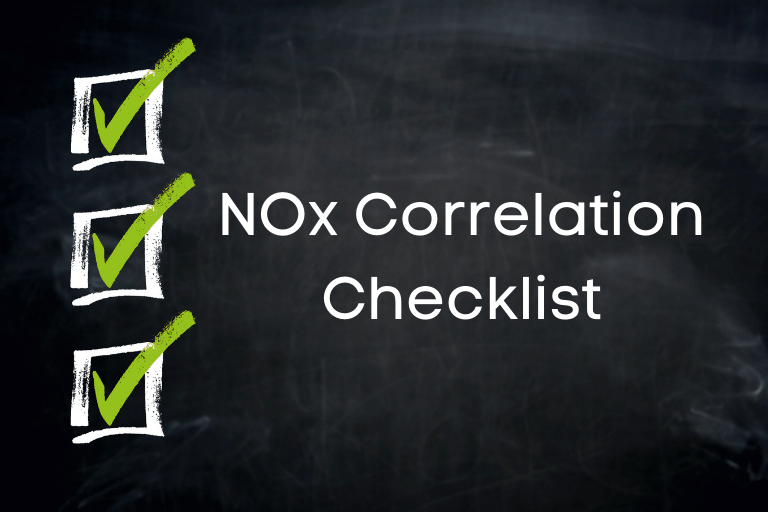NOx Correlation Testing Checklist
Facilities have in-house procedures for NOx Correlation Testing, as required by the Environmental Protection Agency. As with all procedures, preparation for NOx Correlation Testing is extremely important. Use this pre-testing checklist for assistance.
What is NOx Correlation Testing?
High levels of NOx can have a negative effect on vegetation by making it more susceptible to disease and frost damage. When NOx reacts with other pollutants in the presence of sunlight, it forms ozone. Ozone at high concentrations also damages vegetation.
Facilities have in-house procedures for NOx Correlation Testing, as required by the Environmental Protection Agency. Read the EPA Guide to NOx: Why and How They are Controlled for more information. Facilities typically perform the testing every five years.
NOx Correlation Pre-Testing Activities: A Checklist
-
Review in-house procedures and testing plans with all stakeholders months in advance.
-
Review any past correlation testing records and begin setting up and defining new records.
If using the StackVision DAS, the Users Guide is a great resource (users can access it via the Customer Community).
-
Review in-house records
Due to the infrequency of these tests, preparing and following a site-specific procedure helps lead to consistent and successful results.
-
Determine or verify the validity of the four operating parameters tracked and recorded in the data system.
These four parameters must be chosen carefully and lead directly to the formation of NOx emissions. Therefore, if one or more parameters deviate from their normal range of operation, as recorded during the NOx testing, then the NOx curve is no longer representative of the actual NOx emissions. If a deviation occurs, investigate the root cause and correct.
-
Choose the injection rate parameters after consultation with the turbine or boiler manufacturer.
Most states require the water or steam injection rate, or injection ratio, as one of the four operating parameters if a facility uses water or steam injection. Other operating parameters typically include compressor outlet pressure, temperature, inlet guide van position, or others.
-
Decide on the test operating levels (usually four sets of operating levels from minimum to maximum load).
Be aware that the maximum operating level which can be achieved can change due to ambient weather conditions. Hotter weather conditions (hot ambient air can mean less dense air or less mass of O² per cubic foot) in summer can limit or reduce the maximum load the unit can reach.
-
Prepare for testing by selecting the date with the various parties involved (managers, operating staff, and other key stakeholders)
In many cases, the dates for the testing need to be scheduled at least several weeks to several months in advance, especially with the stack testing team.
-
Review the records from the most recent round of testing, focusing on the fuel flow, heat input, and the four operating parameters.
Duplicating those operating conditions should replicate the emission conditions and hopefully achieve a successful set of testing results. Make sure all preventative maintenance activities have been completed successfully on the fuel flow metering system, along with any work for the burners, which might impact the formation of NOx emissions.
NOx Correlation Testing Conclusion
The National Air Quality Standards (NAAQS) defines levels of air quality that are necessary, with a reasonable margin of safety, to protect public health (primary standard) and public welfare (secondary standard) from any known or anticipated adverse effects of pollution. NOx Testing is important to safety and compliance with the EPA’s guidelines. By following the helpful pre-testing advance above and using a Data Acquisition System like StackVision or Prism, facilities can ensure a smooth and successful testing run. ESC Spectrum also provides a wide variety of CEMS services and maintenance, including Stack Testing. Contact us to discuss your needs.
Interested in learning more about NAAQS regulations and staying in compliance? Read our Definitive Guide to Air Emissions Regulations.


